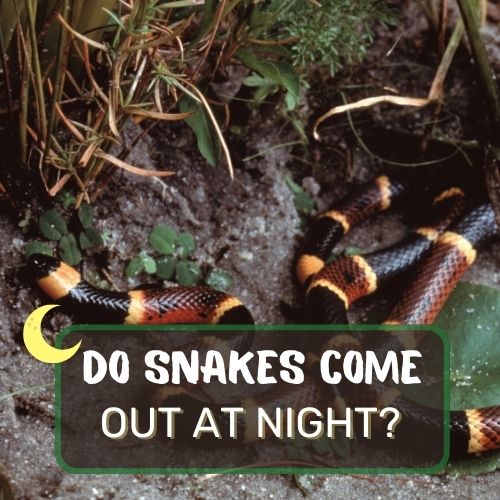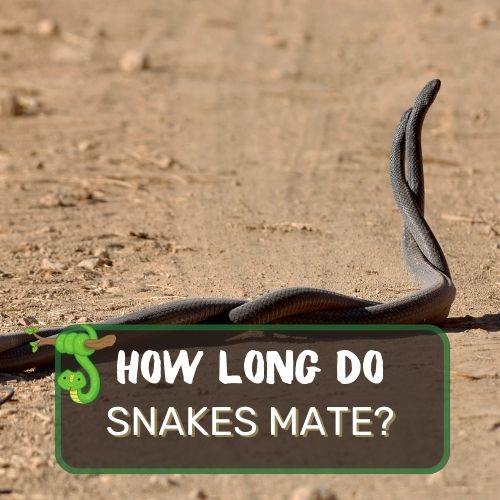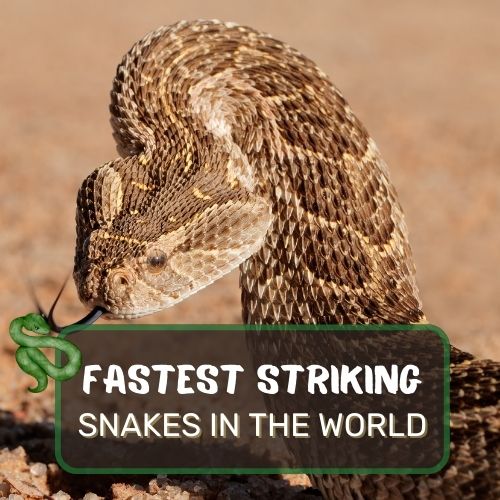
In this article, we will explore the intriguing world of nocturnal snake behavior.
We will delve into the factors that influence their activity patterns, their hunting techniques, and the common species that emerge under the cover of darkness.
Discover how snakes use their specialized senses to navigate the night and locate their prey.
Furthermore, we will learn about their preferred habitats during nighttime hours and the precautions to take when encountering snakes in the dark.
If you’re curious about these mesmerizing reptiles and want to enhance your understanding of their nocturnal habits, this article is a must-read!
Table of Contents
- 1 Do snakes come out at night?
- 2 Snake Behavior and Activity Patterns
- 3 Snakes and Nocturnal Hunting
- 4 Snakes’ Preferred Habitat at Night
- 5 The Relationship Between Snakes and Prey at Night
- 6 Snake Behavior During Different Seasons
- 7 Human Interactions with Snakes at Night
- 8 Snake Reproduction and Mating Behavior at Night
- 9 How to Avoid Encounters with Snakes at Night
- 10 FAQ
- 11 Conclusion
Do snakes come out at night?
Yes, snakes do come out at night. Many snake species are nocturnal, meaning they are most active during the nighttime hours. Nocturnal snakes have adapted to the dark by developing specialized heat-sensing pits and excellent night vision, which helps them hunt for prey and navigate in low-light conditions.
These snakes prefer to avoid the heat of the day and come out of their hiding spots to search for food, explore their surroundings, and carry out other activities during the night.
However, it’s important to note that not all snakes are nocturnal; some are diurnal and are more active during the day.
The activity patterns of snakes can vary based on species, location, and environmental factors.
So, whether you’re out on a nighttime hike or exploring snake habitats during the day, it’s always wise to remain cautious and respectful of these fascinating reptiles.
Snake Behavior and Activity Patterns

Diurnal and nocturnal snakes
Snakes, like many other animals, exhibit distinct behavior patterns. Some are diurnal, meaning they are most active during the day, while others are nocturnal, preferring the cover of darkness for their activities.
Diurnal snakes, such as the Corn Snake and the Eastern Garter Snake, are most commonly spotted basking in the sun or hunting for prey during daylight hours.
Their eyesight is well-adapted to bright conditions, giving them an advantage in hunting during the day.
On the other hand, nocturnal snakes, like the Eastern Diamondback Rattlesnake and the Texas Rat Snake, become more active at night.
They have specialized heat-sensing pits that allow them to detect warm-blooded prey in the dark. As the sun sets, these serpents emerge from their hiding spots to begin their nightly adventures.
Factors influencing snake activity patterns
Several factors influence snake activity patterns. One critical factor is their prey availability. Diurnal snakes might focus on hunting during the day when their prey, such as rodents and birds, are more active.
Nocturnal snakes, however, target animals that are active at night, like small mammals and amphibians.
Another factor is temperature regulation. In hotter regions, snakes may be more active during the cooler nighttime hours to avoid the scorching sun.
In contrast, snakes in cooler climates might be more active during the day to take advantage of the warmth.
Common snake species and their activity patterns
Various snake species around the world exhibit different activity patterns. For instance, the vibrant California Kingsnake is diurnal and is often seen slithering through grassy areas or climbing trees during the day.
Conversely, the mysterious Australian Death Adder is a master of the night, using its camouflage and stealth to catch unsuspecting prey under the cover of darkness.
The role of temperature and weather on snake behavior
Temperature and weather play a vital role in influencing snake behavior. Snakes are ectothermic, meaning they rely on their environment to regulate their body temperature.
Warmer temperatures often result in increased snake activity, especially for those cold-blooded reptiles.
During extremely hot weather, snakes may become less active to conserve energy, seeking refuge in cool and shaded areas.
On the other hand, during colder temperatures, snakes might hibernate or become less active to avoid extreme weather conditions.
Understanding the nuances of snake behavior and activity patterns is crucial for anyone venturing into snake habitats.
While some snakes may come out at night, others prefer the day, and there are specific factors that determine when and how they emerge from their hiding places.
By arming ourselves with knowledge and respect for these creatures, we can coexist harmoniously with snakes in their natural habitats.
So, the next time you venture into the wilderness, keep an eye out for these mesmerizing reptiles, day or night!
Snakes and Nocturnal Hunting

How snakes use their senses to hunt at night
When it comes to hunting at night, snakes are expert predators, relying on their acute senses to track down prey.
Their specialized heat-sensing pits, known as “pit organs,” allow them to detect the faintest heat signatures of warm-blooded animals nearby.
These remarkable pits, located on either side of their heads, enable them to strike with deadly precision in total darkness.
Additionally, snakes have an exceptional sense of smell, picking up chemical cues from their environment and following scent trails left by potential prey.
Their forked tongues help them “taste” the air, gathering information about the direction and proximity of nearby animals.
Advantages and disadvantages of hunting at night
Hunting at night offers several advantages for nocturnal snakes. The cover of darkness provides them with protection from diurnal predators, reducing the risk of becoming prey themselves.
Moreover, the cooler temperatures at night allow them to conserve energy while being active, especially in regions with scorching daytime temperatures.
However, hunting at night also comes with its challenges. The reduced visibility requires snakes to rely heavily on their other senses, making their hunting methods more stealthy and precise.
They must get much closer to their prey before striking, as opposed to diurnal snakes that can spot prey from a greater distance.
Examples of nocturnal hunting snake species
Several snake species have evolved to become master nocturnal hunters. One fascinating example is the Western Diamondback Rattlesnake.
Under the cover of darkness, this venomous serpent uses its heat-sensing pits to locate small mammals, such as rats and rabbits. With a swift and deadly strike, it immobilizes its prey and then tracks it using its keen sense of smell.
Another impressive nocturnal hunter is the African Rock Python. This massive snake is known for its stealth and strength.
Under the veil of night, it can ambush and overpower large mammals, including antelopes and even crocodiles.
Snakes’ Preferred Habitat at Night

Where snakes seek shelter during the night
At night, snakes look for secure and sheltered locations to rest and remain hidden from potential threats. They often seek out crevices, burrows, fallen logs, and dense vegetation to create a safe and comfortable hiding spot.
Factors influencing snakes’ choice of hiding spots
Several factors influence snakes’ choice of hiding spots during the night. Protection from predators is a primary consideration.
Snakes will opt for spots where they can remain concealed and undisturbed by larger animals that may prey on them.
Additionally, temperature regulation plays a crucial role. Snakes seek shelter in places where they can maintain their ideal body temperature without being exposed to extreme heat or cold.
Common locations to find snakes at night
If you’re interested in observing nocturnal snakes, keep an eye on the following locations during your nighttime adventures:
- Forests and Woodlands: Snakes often seek refuge in fallen leaves and rotting logs, providing them with ample cover.
- Grasslands and Fields: In these open areas, snakes might utilize small burrows or the cover of tall grasses.
- Rock Piles and Rocky Areas: Crevices between rocks offer excellent hiding spots for snakes.
- Wetlands and Marshes: Snakes may hide in the dense vegetation and burrows near water sources.
Understanding snakes’ preferred habitats and nocturnal behaviors allows us to appreciate these mysterious creatures better.
So, next time you venture out into the night, keep your eyes peeled, and you might just catch a glimpse of these elusive nighttime hunters.
The Relationship Between Snakes and Prey at Night

Explanation of the predator-prey relationship
The relationship between snakes and their prey at night is a classic example of the predator-prey dynamic in nature.
As nocturnal hunters, snakes have evolved various adaptations to become efficient predators. They rely on their senses, such as heat detection and scent tracking, to locate potential prey in the darkness.
At the same time, their prey, such as small mammals, birds, and amphibians, have developed their own defense mechanisms to evade predation.
Some may have keen senses of their own to detect the presence of snakes, while others may use camouflage or quick reflexes to escape from the clutches of these stealthy hunters.
How snakes locate and capture prey at night
When hunting at night, snakes use their heat-sensing pits to detect the body heat of nearby prey. Once they locate a potential target, they employ their sense of smell to follow the scent trail left by the animal.
This combination of heat detection and scent tracking helps them zero in on their prey with remarkable precision.
Once within striking range, snakes rely on their lightning-fast strikes to immobilize their prey.
Venomous snakes inject venom through their fangs, quickly incapacitating their victims, while non-venomous snakes use constriction to suffocate their prey before swallowing them whole.
Examples of prey species targeted by snakes at night
Nocturnal snakes have a wide array of prey species to choose from during their nightly forays. Some common prey items include:
- Rodents: Small rodents like mice and rats are frequently targeted by snakes due to their abundance and relatively high body heat.
- Birds: Snakes can climb trees and use their stealth to ambush birds during the night.
- Amphibians: Frogs and toads are often on the menu for nocturnal snake species, especially near bodies of water.
- Insects: Some small snakes may feed on insects like beetles and caterpillars.
Snake Behavior During Different Seasons

Differences in snake behavior between summer and winter
Snake behavior undergoes significant changes throughout the different seasons.
During the summer months, when temperatures are high, snakes are generally more active and spend more time hunting for food and exploring their territories.
The warmer weather provides them with optimal conditions for digestion and metabolism.
Hibernation and its impact on snake activity
As winter approaches, many snakes enter a state of hibernation, also known as brumation. During this period, their metabolic rate drops significantly, and they become less active.
To survive the colder temperatures, snakes seek out hibernation sites, such as burrows, crevices, or underground dens, where they can conserve energy and remain insulated from the cold.
Spring and fall activity patterns of snakes
In spring, as temperatures begin to rise, snakes emerge from their hibernation sites and become more active.
They start seeking mates and preparing for the breeding season. The warming weather also prompts an increase in prey activity, providing snakes with ample opportunities for feeding.
During the fall, as temperatures start to drop again, snakes become more sluggish and prepare for hibernation. They may increase their food intake to build up fat reserves that will sustain them during the winter months.
Understanding the seasonal changes in snake behavior is essential for appreciating the natural rhythms of these creatures.
It also reminds us of the delicate balance of nature, where every season plays a vital role in the survival and reproduction of these remarkable reptiles.
Human Interactions with Snakes at Night

Safety precautions when encountering snakes at night
Encountering a snake at night can be an exhilarating experience, but it’s essential to take precautions to ensure both your safety and the well-being of the snake. Here are some safety tips to keep in mind:
- Remain Calm: If you encounter a snake, try to remain calm and avoid sudden movements. Most snakes prefer to avoid confrontation and will retreat if given the chance.
- Give Space: Keep a safe distance from the snake and do not attempt to handle or provoke it. Respect its space and observe from a safe distance.
- Use a Light: If you’re exploring at night, carry a flashlight to help you see potential snake habitats and avoid stepping on or near snakes.
- Wear Appropriate Clothing: When hiking or exploring in snake-prone areas, wear sturdy, closed-toe shoes and long pants to reduce the risk of a snakebite.
Common misconceptions about snakes at night
Misconceptions about snakes often lead to fear and unnecessary harm to these creatures. One common misconception is that all snakes are aggressive and dangerous at night.
In reality, snakes typically prefer to avoid human interaction and will only strike if they feel threatened or cornered.
Another misconception is that all snakes are venomous. While some snake species are venomous, the majority are non-venomous and harmless to humans.
Snakebite risks and prevention measures
Although snakebites are relatively rare, they can occur during nighttime encounters with snakes. To reduce the risk of snakebites, follow these prevention measures:
- Stick to Trails: Stay on designated trails and avoid wandering off into dense vegetation where snakes may be hidden.
- Avoid Provoking Snakes: Do not attempt to handle, capture, or provoke snakes. Give them space and allow them to move away.
- Know First Aid: If a snakebite does occur, seek immediate medical attention and apply appropriate first aid, such as keeping the affected limb immobilized and at or below heart level.
By understanding proper safety measures and dispelling misconceptions, we can foster a more harmonious coexistence with snakes in their natural habitats.
Snake Reproduction and Mating Behavior at Night

Snake reproductive cycles
Snakes, like many other reptiles, reproduce sexually and undergo distinct reproductive cycles. Their reproductive activity is often influenced by environmental factors, including temperature and photoperiod (the duration of daylight).
Mating behavior of snakes at night
For many snake species, mating takes place during the spring and early summer. During this time, male snakes engage in courtship behaviors to attract females.
These courtship displays may involve intricate movements, pheromone signaling, and even combat between rival males.
At night, some snakes rely on their keen senses, such as scent detection, to locate potential mates in the dark.
The quiet and undisturbed nature of the nighttime environment may provide an ideal setting for these secretive mating rituals.
Nesting and hatching of snake eggs
After successful mating, female snakes may lay eggs or give birth to live young, depending on the species.
Many snake species lay eggs, which they carefully place in suitable nesting sites. These nesting sites are often chosen for their warmth and protection, providing the developing embryos with the best chance of survival.
During the incubation period, the female may remain nearby to guard the eggs and provide some level of protection. When the time is right, the eggs hatch, and the hatchlings emerge into the world, ready to embark on their own journey.
Understanding the intricacies of snake reproduction and mating behavior helps us appreciate the complex life cycles of these reptiles.
By respecting their natural behaviors and habitats, we can contribute to the conservation of these incredible creatures for future generations to enjoy.
How to Avoid Encounters with Snakes at Night
Snake-proofing your property
If you live in an area with a significant snake population, taking measures to snake-proof your property can help reduce the likelihood of encountering snakes at night. Some steps you can take include:
- Keep Your Yard Tidy: Regularly trim grass and vegetation to eliminate potential hiding spots for snakes.
- Seal Cracks and Holes: Seal any gaps or openings around your home, such as gaps in doors or walls, to prevent snakes from entering.
- Remove Attractants: Keep bird feeders and pet food indoors, as these can attract rodents, which in turn attract snakes.
- Use Snake Repellents: Consider using commercially available snake repellents around your property’s perimeter as an additional preventive measure.
Tips for hiking and camping in snake-prone areas at night
When venturing into snake-prone areas at night, follow these tips to minimize the risk of encountering snakes:
- Stay on Trails: Stick to designated trails and avoid venturing off the beaten path, where snakes may be hidden in tall grass or underbrush.
- Use a Light: Carry a flashlight or headlamp to illuminate your path and spot snakes before stepping on or near them.
- Wear Appropriate Clothing: Wear closed-toe shoes and long pants to protect your lower extremities from potential snakebites.
- Campsite Selection: Choose a camping spot away from potential snake habitats, such as rocks, fallen logs, or dense vegetation.
Snake bite first aid and emergency procedures
In the unfortunate event of a snakebite, knowing the proper first aid and emergency procedures can be life-saving. Remember the following:
- Seek Immediate Medical Attention: Even if you believe the snake is non-venomous, seek medical attention as soon as possible.
- Immobilize the Affected Limb: Keep the bitten limb immobilized and at or below heart level to slow the spread of venom.
- Do Not Cut or Suck the Bite: Cutting the wound or attempting to suck out venom is not recommended and can worsen the injury.
- Do Not Apply Ice: Applying ice to the bite site can worsen tissue damage and should be avoided.
FAQ
What time of night are snakes most active?
Snakes are generally most active during the early evening and early morning hours. As nocturnal creatures, they become more active as the sun sets and temperatures drop. However, individual snake species may have specific activity patterns, and some may be more active later into the night.
What is the best time of day to avoid snakes?
Snakes are ectothermic and rely on external temperatures to regulate their body heat. During the hottest part of the day, they often seek shelter and become less active. Therefore, midday, when temperatures are at their peak, may be the best time to avoid encountering snakes.
What can you spray to keep snakes away?
There are various commercially available snake repellents that use natural ingredients like sulfur, cinnamon, or clove oil. However, their effectiveness is a subject of debate, and they may not provide complete protection against snake encounters. It is essential to focus on preventive measures, such as keeping your property tidy and being cautious in snake-prone areas.
By following these guidelines and understanding the behavior of snakes, you can enhance your safety and enjoyment during nighttime activities in snake habitats. Remember, snakes play a vital role in the ecosystem, and coexisting with them responsibly is key to maintaining a balanced and healthy environment.
Conclusion
Summary of key points discussed in the article
In this comprehensive article, we explored the intriguing world of snakes and their nocturnal behaviors. We delved into their activity patterns, hunting techniques, preferred habitats, and seasonal behaviors.
We learned how snakes use their senses to navigate and hunt in the dark, targeting a variety of prey species. Additionally, we gained insight into their mating and reproductive behaviors, as well as the importance of snakebite prevention and safety measures.
Importance of coexisting with snakes and respecting their behavior
Snakes play a crucial role in the ecosystem, serving as essential predators that help control rodent populations and maintain ecological balance.
Understanding their behavior and habitat preferences is vital for both our safety and their well-being. By respecting their space and natural instincts, we can foster a harmonious coexistence with these remarkable reptiles.
Closing thoughts and final remarks
As we venture into the natural world, day or night, it is essential to approach encounters with snakes and other wildlife with caution and respect.
Educating ourselves about their behavior, reproductive cycles, and habitats enables us to appreciate the wonders of nature without causing harm.
Nighttime explorations can be particularly enchanting, allowing us to witness the beauty of nocturnal creatures, including snakes, as they go about their lives in the moonlit darkness.
Remember, observing from a safe distance, keeping trails clean, and taking appropriate safety precautions are simple yet effective ways to ensure a positive and memorable wildlife encounter.
By promoting awareness and understanding of snakes, we can protect these awe-inspiring creatures for future generations to cherish and learn from.
So, the next time you find yourself under the night sky, be open to the possibility of encountering these enigmatic creatures.
Embrace the chance to learn more about their fascinating lives and the vital role they play in the intricate tapestry of our natural world.




0 Comments